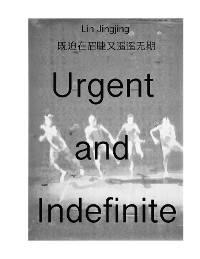Urgent and Indefinite
* Affiliatelinks/Werbelinks
Links auf reinlesen.de sind sogenannte Affiliate-Links. Wenn du auf so einen Affiliate-Link klickst und über diesen Link einkaufst, bekommt reinlesen.de von dem betreffenden Online-Shop oder Anbieter eine Provision. Für dich verändert sich der Preis nicht.
Geisteswissenschaften, Kunst, Musik / Kunst
Beschreibung
Color of Memory
Lin Jing jing interview with Mi zhuang (2)
Mizhuang: Your work Color of Memory invited different people to enter into the artwork. Did you have any special criteria for the people you chose?
Lin: The people came from different backgrounds, different professions, different genders and different ages. I asked them the same three questions, all about their most painful memory.
Mizhuang: This is very interesting. You asked them to use a special way of recognizing and transferring their private memories.
Lin: Right. First they transform an abstract memory into a concrete object, then transform it into an abstract color.
Mizhuang: Their answers came to directly form the content and methods of your artwork.
Lin: Right. The narrative and transfer of information was theirs, and then I, as an observer, used the colors they described to paint an “object” that they described as having a close connection to their memory. I rendered and transformed their information.
Mizhuang: I noticed that you intentionally separated the sound and visuals in the narration videos. All of the people recounting their stories alone, when they stare into the camera and slowly speak; it feels calm and real, with no glossing over. The sound of their narratives is stiff; you rendered it into a staccato style, with each word being hammered out one at a time. To be honest, it really hit me.
Lin: Each segment is very severe, sorrowful and hesitant. The pain seems to belong to the speaker, and has been compressed into an unknown corner, where hidden wounds cause constant disruption. But in the recounting of this pain, it gradually separates and exists outside of the speaker, away from the pain of the experience. To recount the past is to create anew. Its realness shocks us, to the point that we almost don’t dare to face its realness. Pain can alter our normally numb state, but it can also make us grow number. This is a paradox. One person grew up under the shadow of his dead older brother. This brother, who he has never seen, perpetually hovers over every road he must cross. In the face of death, he is superfluous, imperfect, unreal. This painful memory has overshadowed him for thirty years, never fading away. When I asked him the second and third questions, he said: a medicine bottle full of pills. White, an extremely pale white. I believe that what shocks you is not the pain itself. Pain is not about individual experiences; it is about natural philosophy.
Mizhuang: Have you compared these different experiences?
Lin: I don’t look for the differences between these painful memories, I look for their commonalities. Extreme pain and grief are often caused by abandonment, sickness and death, or even abstract fear of one of the above, worry about potential danger and its unpredictable arrival. Through recognizing pain, we recognize all life, recognize our shared fears, desires, earnestness, control and balance. We face the fact that fear can never be truly avoided, face the fact that hopelessness can come out of nowhere, face the fact that pain magnifies our fears, doubts and weaknesses.
What matters is not what kind of pain we experienced. What matters is: what does that pain bring us? What does the most frightful pain we experience turn us into? When faced with enormous pain, what do freedom, dignity, even our lives mean?
Kundenbewertungen
Future, Video art, LED Light Art, Interdisciplinary Art, Sound Art, Contemporary Art, Constraint and resistance, Artificial intelligence, Non-Places, Social-political themes, Lov-Lov, Conceptual Art, Existence and absence, Artist Book, Identity, Confusion and quest, Performance Art, Paradoxical Concepts, Art and Technology, Installation Art, Political Art, Woman Artist, Socially engaged Art


























